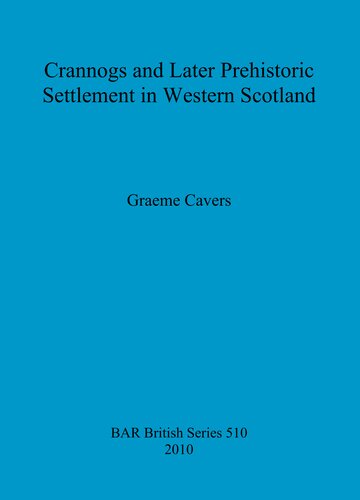

Most ebook files are in PDF format, so you can easily read them using various software such as Foxit Reader or directly on the Google Chrome browser.
Some ebook files are released by publishers in other formats such as .awz, .mobi, .epub, .fb2, etc. You may need to install specific software to read these formats on mobile/PC, such as Calibre.
Please read the tutorial at this link: https://ebookbell.com/faq
We offer FREE conversion to the popular formats you request; however, this may take some time. Therefore, right after payment, please email us, and we will try to provide the service as quickly as possible.
For some exceptional file formats or broken links (if any), please refrain from opening any disputes. Instead, email us first, and we will try to assist within a maximum of 6 hours.
EbookBell Team

5.0
18 reviewsThe focus of this research is on the later prehistoric period, from the earliest constructional origins of western Scotland crannogs in the late Bronze Age through to their apparent emergence as status dwellings in the Early Historic period after the midfirst millennium AD. The aim is to investigate the ways in which crannogs functioned as settlements, both on a practical, economic as well as a symbolic and socio-cultural level. Throughout, the primary concern is with contextualisation, considering crannogs within their correct chronological and cultural context through the critical analysis of dating evidence as well as the identification of the relevant ritual and symbolic themes- i.e. the Iron Age veneration of water. It is argued in this book that the stereotypical view of a crannog that has largely been derived from the results of work carried out on Irish crannogs has been misleading in the case of the Scottish sites, tending towards a view of crannogs as high-status strongholds, often as royal seats. Though crannogs were certainly a significant feature of the Early Historic period in Scotland, there is as yet no evidence of direct connections to royalty in this period and, based on the currently available evidence, the characterisation of crannogsas high status sites is misguided in the context of their late Bronze and Iron Age origins.